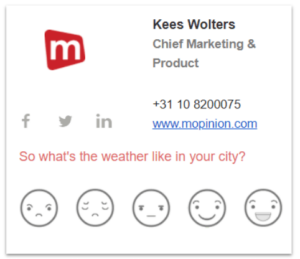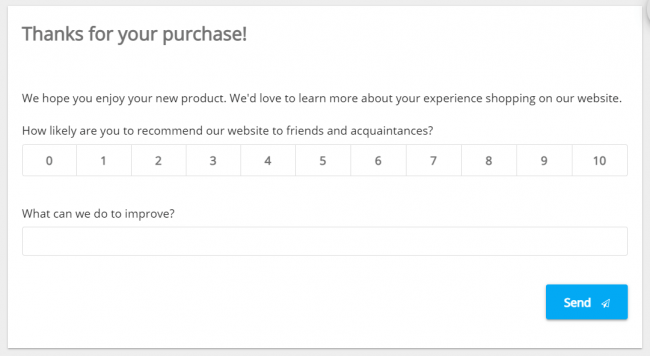It’s 2025, and you’re probably wondering if your email marketing efforts are still paying off. Interestingly enough, while many new opportunities are surfacing that enable digital marketers to reach out to their customers (such as video marketing and webinars), email marketing still remains one of the most effective. In fact, according to HubSpot, “email generates $42 for every $1 spent, which is an astounding 4,200% ROI, making it one of the most effective options available”.
Much like other marketing channels, however, email campaigns do offer up their fair share of challenges. And many of these challenges revolve around a lack of understanding and engagement with the target audience. It seems that with many campaign emails, communications are only outbound, leaving marketers with no real insight into how their email was received by their readers.
There are some metrics to measure the performance of your emails, such as click-bounce rate, open rate, click-through-rate (CTR) and conversion rate (CR). But they don’t tell you everything. That’s why email feedback is a critical component – it gives us an explanation as to why these metrics are low or high.
The lack of insight into the performance of email campaigns is precisely why it’s important to start collecting email feedback.
In this post, we will address the following:
- What is Email Feedback?
- The Benefits of Email Feedback
- Types of Email Feedback + Examples
- Tips for a Successful Email Feedback Programme
What is Email Feedback?
Email Feedback is the process of collecting feedback through email. Usually, it’s done by embedding a survey into the email body or by adding a link to a feedback survey questionnaire. Note: this is not to be confused with standard feedback invites, whereby the subject of the survey is about a call centre issue or touchpoint not related to the email itself.
First and foremost, though, email feedback plays an important role in customer-centricity. By collecting customer feedback within your email campaigns, you are providing a platform for two-way communication with your customers where they can share their thoughts and perceptions of your email(s) and the information you’ve provided. In other words, you as a marketer gain insight into what your readers truly value.

Optimise your email campaigns with email feedback
Drive conversions, engage with your audience and create a meaningful customer experience by email.
From promo campaigns, confirmation emails and newsletters to post-purchase drip and re-engagement campaigns, it can be a challenge to meet your customers’ needs if you’re not in tune with them.
Email Feedback enables your team to deliver powerful email campaigns that sit well with your audience.
The Benefits of Email Feedback
- Content & strategy: Listening to your audience allows you to adapt messages, frequency and content to your readers’ needs.
- Enrich your Voice of Customer (VOC) program: Your VOC program will be stronger when collecting feedback from all your active channels and throughout the customer journey.
- Customer loyalty: Allowing your audience to give feedback and implementing changes accordingly builds relationships with your customers, which affects loyalty positively.
- Boost email engagement: Adapting your emails and content to your recipient’s needs will in the end lead to boosted engagement and performance.
Types of Email Feedback and Examples
Let’s take a look at different types of email feedback and some examples.
1. Email signature feedback
Email signature feedback is a type of email feedback that typically asks one short question and uses a simple rating (i.e. smileys, stars or a numerical value). It simply asks the reader to give a rating, and that’s it!
Pros of email signature feedback:
- You’ll receive a constant stream of feedback
- You can quickly and easily determine the sentiment around a certain theme
- Because the answers are short, you can quickly draw conclusions from them
- It doesn’t ask too much of your readers as these surveys are always short and simple
Cons of email signature feedback:
- Your survey is always visible, even if it is not always relevant
- You cannot see who provided the feedback
Example questions of feedback via your email signature:
- How would you rate our services? (To determine whether you’ve met the expectations of your customers.)
- What do you think of the brand X? (For inquiring about brand strength/preference.)
- Do you know product X? (To see if a particular campaign is successful.)
- What do you think of our “tone of voice”? (To determine if you have the correct style
of writing.)

2. Email feedback survey invites
Now, let’s take a look at email feedback survey invites. These are those ‘normal’ survey emails that you send from your own inbox. Because these are personal and targeted messages, they provide a lot of qualitative data.
Email feedback survey invites are often used as a follow-up to, for example, customer interactions such as making a purchase, receiving any kind of service or as you can see in the example below, receiving a product demo.

These surveys often work with a click-through to a landing page, whereby the customer or recipient can leave additional information. Because you are targeting an individual and asking specific questions using this feedback, you can gain good insight into the quality of the customer experience.
3. Email campaign feedback
Lastly, there is email campaign feedback. In this case, a snippet of code is added to your campaign. In the email itself, this form appears as an embedded feedback survey.
Examples of automated emails might include:
- Welcome emails,
- Order confirmations,
- Related product emails,
- Service emails,
- Support notifications,
- Newsletters and more.

We put together a list of effective email feedback templates to show you what this actually looks like in campaign emails.
This kind of feedback is particularly useful in that campaign emails are typically sent out automatically and in bulk, meaning that the user can gather a lot of feedback from a lot of readers in a short period of time.
Tips for a successful email feedback programme
Ready to get started with email feedback? Here are a few tips to help you kick things off right…
1. Make sure you have a strong setup prior to collection
Before you do anything, whether that’s creating email surveys or even deploying them, it’s important to make sure you’ve segmented your audience beforehand. As previously mentioned, targeting your prospects and customers with email marketing is much more effective than any social media post. It gives you a direct line with your audience so that you can personalise and cater your content and promotions to them as needed.
In fact, this is particularly important for personalisation purposes. By sending personalised email campaigns, you ensure that your brand, products, and content remain relevant to your customers.
You can segment your audience in a number of different ways, such as grouping various demographics, including age, gender, geographic location, etc. You can also break down your audience into types of respondents:
- Subscribed readers who didn’t open the email
- Subscribed readers who did open it
- Non-subscribers who opened it
- Non-subscribers who opened it AND clicked on one of the ‘through’ links
And then there is the layout of your email…
Before gathering your feedback, be sure to aim for these three things:
- Simple copy
- A minimalist design
- A clear Call-To-Action (CTA)
Though your feedback will help you optimise these efforts, it’s important to start with a good basis and keep these in mind. Let’s take a closer look.
2. Pay attention to the structure of your surveys
Remember, you’ve got an audience with an attention span of just about 8 seconds. Toppled with the fact that email users receive an average of 121 emails each day, it’s a short window of time you have to get their attention and gather their feedback. For this reason, it’s important to create surveys that will keep effort levels minimal for your audience while simultaneously helping you gain meaningful insights.
So what steps should you take?
Here are a few things to consider when building your email feedback surveys:
- Keep the question(s) brief and to the point. Often, the more questions you ask, the fewer responses you’ll receive. Make sure your readers can quickly scan the text in your survey.
- Ask questions that help you achieve your goal(s). Use questions that steer your customers in the right direction in terms of the feedback you want to collect from them.
- Use open-ended questions. Leave your readers with the option to submit open-ended feedback. This way, you are more likely to receive a more detailed response and explanation for the rating they’ve provided.
3. Cater your email surveys to your organisation’s goals
From welcome emails and order confirmations to shopping cart abandonment and related product emails, there’s a lot to cover with email feedback.
That being said, it’s important to make sure you’re asking the right questions in your email surveys so that you can reach your goals.
To illustrate, we’ve included a few examples below:
Email confirmation / Post-purchase Email
Even if your customer has made a purchase or completed an online process, it doesn’t mean they did so with ease. Post-purchase (or post-experience) is a great time to ask how things went and how loyal your customers are.
What types of survey questions are best?
Kick off your survey with an NPS question: ‘How likely are you to recommend our website to friends and family?’. Then dive deeper and add follow-up questions that will help you discover factors that may help you improve. ‘What can we improve upon – according to you’. You could either leave this as an open answer section or use multiple choice and select main areas of improvement (e.g. online offers, ease of purchase, etc).

Newsletters
Collecting email feedback in newsletters (or other content-rich emails) is a quick and simple way to gauge readership as well as email campaign performance.
What types of survey questions are best?
As we said before, keep the question(s) short and to the point. Often, the more questions you ask, the fewer responses you’ll receive. In fact, most of the time it’s best just to use a thumbs up / thumbs down option.
Also make sure that your readers can quickly scan the text. If you leave your readers with the option to submit open-ended feedback, you are more likely to receive a more detailed response.
4. Generate context
The next challenge will be to make sense of the feedback by aligning it with existing data that helps you generate contextual insights.
Going back to what we mentioned before, segmentation is a great starting point in your feedback collection process and for generating context. Knowing which readers have engaged with your emails and comparing that information with feedback data can be really beneficial. It will give you some background information and perhaps insight into why your readers did or didn’t like something you sent.

This marriage of data enables you to understand how a particular customer profile experiences the email content you’ve sent. Or, in the case of post-purchase emails, for example, it shines a light on the type of experience the customer had prior to purchasing a product or service. These are really interesting insights as they provide a detailed view of the user and their feedback.
So, which kinds of data can be collected with email feedback, you ask?
You can align your feedback with all kinds of data, such as:
- Name
- User ID
- Campaign ID
- Campaign Source
- Email address
- Customer segments
- Marketing personas
In fact, many feedback tools, such as Mopinion, enable you to gather this data simultaneously by passing metadata from emails to your survey using URL parameters. The data can then be visualised in customised charts within your dashboard. Watch the video to learn more about Mopinion for email.
5. Instil a sense of trust among your readers
Are you hoping to receive email feedback continuously from your audience? Then you’ll need to ensure that you’re doing something meaningful with their feedback. Let them feel heard and show them that their feedback is constructive.
The best way to do this is to directly inform your readers about what you will do with their input on – for example – future newsletters or service emails. If your readers know it’s something that will really change for the better, they will be more likely to take the time to send feedback.
Start boosting engagement with email feedback
As an email marketer, your goal is to stand out from the crowd and create meaningful interactions with your audience. From increasing open rates and click-through rates to boosting conversions, the only way to succeed in this is to better understand your customers.
Interestingly enough, the majority of email marketing challenges revolve around a lack of understanding and engagement with the target audience. There is often no sense of connection or push for engagement, meaning communications are usually only outbound. And what’s worse, this approach tends to leave marketers with no real insight into how their email was received by their readers.
Email feedback not only enables you to resolve this issue, but also simultaneously enriches your (VoC) program, builds relationships with your audience and boosts email engagement.
Ready to see Mopinion in action?
Want to learn more about Mopinion’s all-in-1 user feedback platform? Don’t be shy and take our software for a spin! Do you prefer it a bit more personal? Just book a demo. One of our feedback pro’s will guide you through the software and answer any questions you may have.






